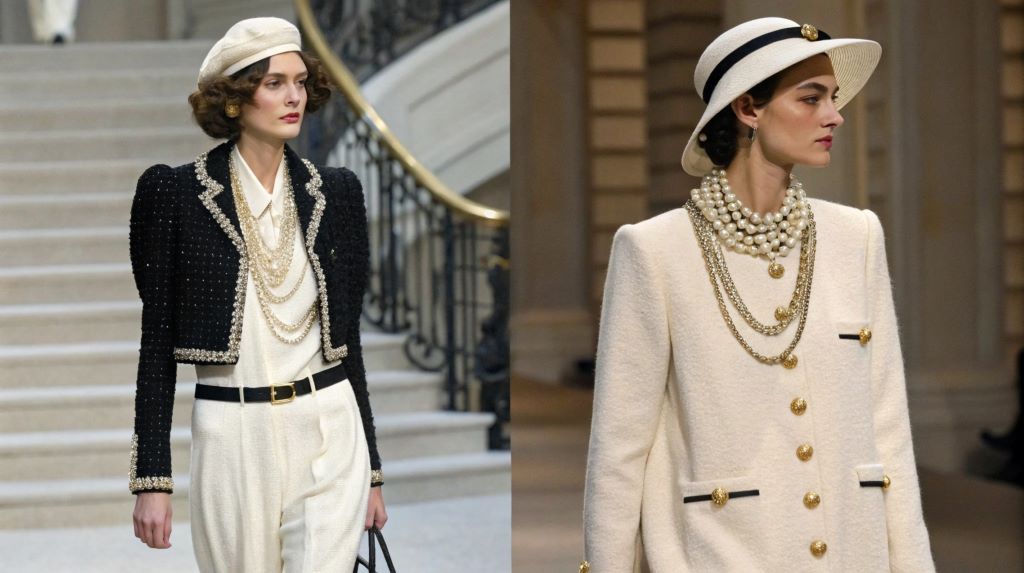Luxury fashion continues evolving toward greater comfort and practicality. Modern designers increasingly prioritize wearability alongside elegance. However, this shift builds upon foundations established by pioneering figures like Coco Chanel. Luxury Pro Bags experts analyze how contemporary comfort standards compare to Chanel’s revolutionary approach to luxury.
Coco Chanel’s Revolutionary Comfort Philosophy
Coco Chanel transformed luxury fashion by prioritizing comfort over restrictive traditional designs. She eliminated corsets and introduced flowing silhouettes that allowed natural movement. Additionally, her designs emphasized functionality without sacrificing sophistication.
Furthermore, examining the comfortable sense compared to coco chanel reveals how modern brands adopt similar principles while incorporating contemporary innovations. Therefore, understanding Chanel’s original vision provides context for today’s luxury comfort standards.
Modern Luxury’s Comfort Evolution
Today’s luxury brands embrace comfort as a primary design consideration. Athletic wear influences high fashion more than ever before. Moreover, consumers demand versatility that supports active lifestyles while maintaining elegant appearances.
Contemporary designers integrate performance fabrics into luxury garments. These materials offer stretch, moisture-wicking properties, and durability. Additionally, modern construction techniques enhance comfort without compromising visual appeal.
Technology Integration in Modern Comfort
Advanced manufacturing techniques revolutionize how luxury items feel and perform. Computer-aided design optimizes fit and comfort across diverse body types. Furthermore, 3D modeling allows designers to test comfort features before production begins.
Innovative materials science creates fabrics that adapt to temperature changes. Memory foam elements appear in luxury footwear and accessories. Therefore, technology enables comfort levels that Chanel could never have imagined.
Smart Fabrics and Adaptive Materials
Modern luxury incorporates smart textiles that respond to environmental conditions. These fabrics regulate temperature and moisture automatically. Additionally, some materials change properties based on activity level or stress.
Nanotechnology creates fabrics with enhanced durability and comfort features. Stain-resistant treatments maintain luxury appearance with minimal maintenance. Moreover, these innovations preserve comfort throughout extended wear periods.
Sustainability Meets Comfort
Environmental consciousness influences modern luxury comfort decisions. Sustainable materials often provide superior comfort compared to traditional alternatives. However, achieving both sustainability and luxury comfort requires careful material selection.
Organic fibers offer natural breathability and softness. Recycled materials demonstrate that eco-friendly choices need not compromise comfort. Additionally, sustainable production methods often result in higher quality, more comfortable finished products.
According to Vogue Business, luxury brands increasingly prioritize sustainable comfort solutions to meet evolving consumer expectations while maintaining premium positioning.
Psychological Comfort in Modern Luxury
Modern luxury extends beyond physical comfort to encompass emotional well-being. Brands design products that provide confidence and psychological comfort. Furthermore, this holistic approach reflects changing consumer priorities and lifestyle demands.
Color psychology influences fabric choices and design elements. Calming hues and textures contribute to overall comfort experience. Additionally, modern luxury considers how products make wearers feel throughout their daily activities.
Emotional Design Elements
Contemporary designers study how specific design features affect mood and confidence. Soft textures and gentle draping create psychological comfort. Moreover, versatile pieces that transition seamlessly between settings reduce decision fatigue.
Modern luxury acknowledges that true comfort encompasses mental and emotional states. Therefore, successful designs address multiple comfort dimensions simultaneously.
Chanel’s Lasting Influence on Modern Comfort
Coco Chanel’s core principles continue influencing contemporary luxury design. Her emphasis on movement and practicality remains relevant today. However, modern interpretations expand upon her original concepts using current technology and materials.
Chanel’s rejection of unnecessary ornamentation resonates with minimalist luxury trends. Clean lines and functional elegance define both historical Chanel and modern comfort-focused designs. Additionally, her focus on quality construction ensures lasting comfort over time.
Accessibility and Inclusive Comfort
Modern luxury increasingly considers diverse body types and abilities in comfort design. Adaptive fashion serves consumers with specific comfort needs. Furthermore, inclusive sizing ensures comfort across broader demographic ranges.
Universal design principles create products comfortable for various users. Adjustable features accommodate different preferences and requirements. Therefore, modern luxury democratizes comfort while maintaining exclusivity.
Size Inclusivity Evolution
Contemporary luxury brands expand size ranges to serve diverse customers. Extended sizing requires reimagining construction techniques for optimal comfort. Additionally, inclusive design benefits all consumers by improving overall comfort standards.
Modern fit technology creates personalized comfort experiences. Body scanning and custom fitting ensure optimal comfort across size ranges. Moreover, these innovations make luxury more accessible without compromising quality.
Cultural Shifts in Luxury Comfort Expectations
Societal changes drive evolving comfort expectations in luxury goods. Work-from-home trends prioritize comfortable yet professional appearances. Additionally, wellness culture emphasizes comfort as essential for overall health and productivity.
Millennial and Generation Z consumers prioritize comfort over traditional luxury status symbols. These demographics value functionality and versatility alongside aesthetic appeal. Therefore, luxury brands adapt to meet changing comfort priorities.
Performance-Luxury Convergence
Athletic wear influence transforms luxury comfort standards. Performance features integrate seamlessly into elegant designs. However, maintaining luxury aesthetics while incorporating athletic functionality requires sophisticated design approaches.
Activewear technology appears in business attire and evening wear. Stretch fabrics and moisture management enhance comfort across diverse occasions. Additionally, this convergence creates new categories of comfortable luxury products.
Future Comfort Innovations
Emerging technologies promise even greater comfort advances in luxury goods. Biometric monitoring could optimize comfort in real-time. Furthermore, artificial intelligence might personalize comfort features for individual users.
Wearable technology integration offers potential for adaptive comfort systems. These innovations could automatically adjust temperature, fit, or support based on activity and environment. Therefore, future luxury comfort may become truly responsive and personalized.
Global Comfort Preferences
Cultural differences influence comfort expectations in international luxury markets. Climate considerations affect fabric choices and design priorities. Additionally, lifestyle variations across regions drive diverse comfort requirements.
Luxury brands must balance universal comfort principles with regional preferences. This challenge requires understanding cultural attitudes toward comfort and formality. Moreover, successful global brands adapt comfort features while maintaining brand identity.
Conclusion
Modern comfort luxury builds upon Coco Chanel’s revolutionary foundation while embracing contemporary innovations. Today’s designs integrate advanced materials, inclusive sizing, and psychological comfort considerations. Additionally, sustainability and technology convergence create new possibilities for luxury comfort. Furthermore, cultural shifts toward wellness and work-life balance drive continued evolution in comfort priorities. Modern luxury successfully honors Chanel’s comfort vision while addressing contemporary needs and expectations.
Frequently Asked Questions
Q: How did Coco Chanel originally revolutionize comfort in luxury fashion? A: Coco Chanel eliminated restrictive corsets and introduced flowing, practical designs that allowed natural movement. She prioritized functionality without sacrificing elegance, creating the foundation for modern comfort-luxury combinations.
Q: What modern technologies enhance comfort in luxury goods today? A: Contemporary luxury incorporates smart fabrics, memory foam elements, moisture-wicking materials, and computer-aided design optimization. These technologies create comfort levels impossible during Chanel’s era while maintaining luxury aesthetics.
Q: How do sustainability and comfort intersect in modern luxury? A: Sustainable materials often provide superior comfort compared to traditional alternatives. Organic fibers offer natural breathability, while eco-friendly production methods frequently result in higher quality, more comfortable finished products.
Q: What role does psychological comfort play in modern luxury design? A: Modern luxury extends beyond physical comfort to encompass emotional well-being. Designers consider color psychology, texture choices, and versatility to create products that provide confidence and reduce decision fatigue throughout daily activities.
Q: How do cultural differences affect luxury comfort expectations globally? A: Climate, lifestyle variations, and cultural attitudes toward formality influence comfort requirements across regions. Successful luxury brands balance universal comfort principles with regional preferences while maintaining consistent brand identity.
Read More:
Stepping Up Your Style Game: 10 Perfect Outfits for Women to Wear with Jordans
Berlin Fashion Week: A Vibrant Hub of Creativity and Conscious Style




